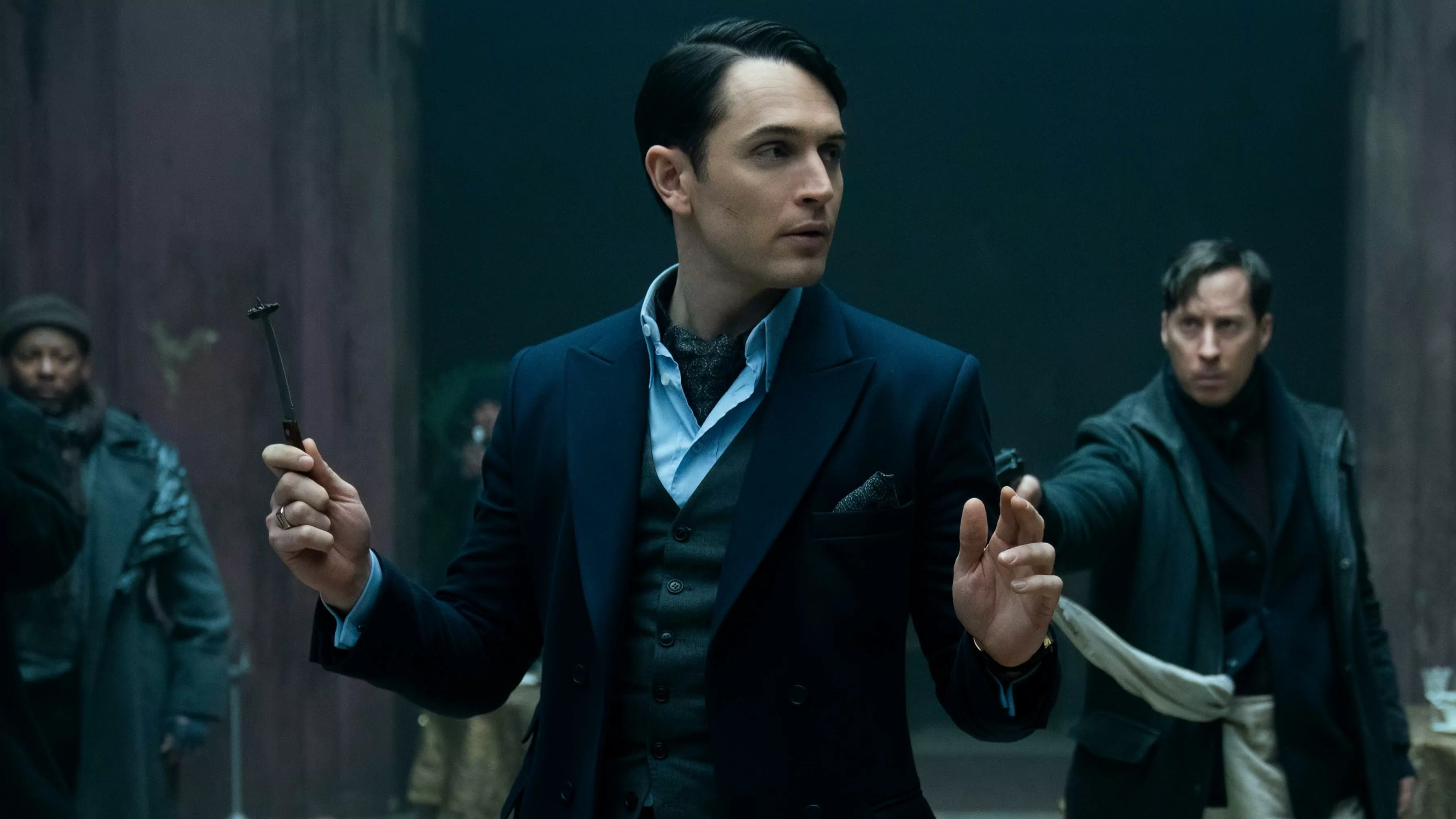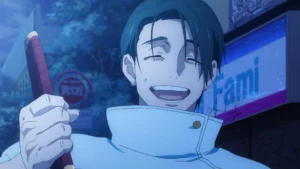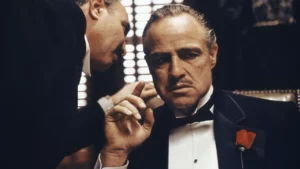
The Continental transports us to a world both familiar and novel—a realm bathed in the shadows of organized crime, where honor and treachery walk hand in hand. As we delve deeper into this engrossing narrative, we will unravel the threads that bind it to its cinematic predecessors while carving out its unique identity. This journey promises to unveil the intricacies of a universe where every gesture, every glance, and every action holds the meaning of assassins and intrigue. Join us as we navigate this captivating terrain, one episode at a time.
The Continental Episode 1 Breakdown: The World Before John Wick
The Continental takes us back to the 1970s, nearly 45 years before all the events of the John Wick movies we’re familiar with. The world seems much less organized, almost as if the high table is still growing in power. The first episode introduces us to Frankie, Winston’s brother, who is clearly set up to be this series’ John Wick. They both have the same suave style, the same hair, and a desire for a fresh start. The episode starts with a scene from 1955 featuring a young Winston and Frankie, hinting at their complicated history. Frankie’s introduction as a character foreshadows the series’ direction.
Frankie, telling Winston, “I did it; you got that,” not only establishes him as a martyr for his brother but also alludes to the episode’s ending. The symbolism of horses representing order is evident throughout the episode, suggesting that order has taken a back seat during the New Year’s celebration, something Frankie will soon take advantage of. Additionally, Winston’s offer to help Frankie start over with money and freedom mirrors the head start he gave John before he was officially ex-communicado in chapter three.
Symbolism and Foreshadowing
The episode is filled with symbolism and foreshadowing, adding depth to the story. The red monochromatic party, reminiscent of scenes from previous John Wick films, sets the tone for imminent bloodshed. Twins in the club symbolize the sibling focus of the episode and foreshadow Frankie’s executioners. The use of animal symbolism is prevalent, with horses representing order and monkeys symbolizing deception.
The scene featuring a red car taking out a circle of gunmen visually reverses how Perkins was killed in John Wick chapter one, emphasizing the theme of revenge. The monkey statue at the episode’s end is a subtle symbol of deception and hints at twists to come. The intricate details of these symbols create a rich narrative.
Frankie’s Parallels to John Wick
Frankie’s character mirrors John Wick in various ways. Both seek a fresh start, are willing to bend the rules, and face betrayal. The episode explores their similarities and differences, setting up potential revenge arcs. Just as John’s family tragedy pushed him into a vengeful killing spree, Frankie’s sacrifice at the episode’s climax mirrors John’s journey. The daisies on the table at Frankie’s hideout are a poignant callback to Helen, John’s deceased wife, who loved daisies. This connection highlights the impact of family on the characters’ motivations.
Winston’s offer to help Frankie start anew echoes the head start he gave John before he was declared ex-communicado. The parallels between Frankie and John create a strong emotional foundation for the series.
The Adjudicator and High Table
The appearance of the adjudicator reveals more about the high table’s history. The series delves into the origins and inner workings of this secretive council. Unlike other adjudicators, this one wears a mask, adding to her enigmatic and intimidating presence. The revelation that the coin press predates the Roman Empire raises intriguing questions about the high table’s history.
The adjudicator’s role as a direct agent of the high table highlights their influence and control over the world of assassins. Her mask symbolizes the secrecy and ruthlessness of the organization. Exploring the high table’s background adds depth to the John Wick universe.
KD’s Role
KD, a detective who values truth over rules, adds a new perspective to the John Wick universe. Her interactions shed light on law enforcement’s involvement in this world. Unlike the cops in John Wick, who typically turn a blind eye to the high table’s activities, KD is unaware of how the Continental operates, using cash instead of the traditional coin, which triggers the guests.
Mayhew, a fellow officer, warns KD about their lack of authority at the Continental, highlighting the complex relationship between law enforcement and the high table. KD’s character introduces a fresh dynamic to the series, emphasizing the contrast between her values and the ruthless world she’s uncovering.
The Continental’s Visual Aesthetics
One of the standout elements of The Continental is its distinct visual style. The series captures the atmosphere of the 1970s while maintaining the signature look and feel of the John Wick universe. The use of vibrant colors, period-accurate costumes, and attention to detail in set design transport viewers to a bygone era. The visual contrast between the chaotic New Year’s celebrations and the more controlled environments within the Continental provides a rich backdrop for storytelling. Exploring the series’ visual choices, from the design of the Continental itself to the fashion choices of its characters, offers a deeper understanding of the world and its evolution over time.
The Evolution of the High Table
While the John Wick movies have introduced us to the high table, The Continental takes us back in time to explore the early days of this powerful organization. Delving into the high table’s origins, its early members, and its rise to prominence within the world of assassins adds a layer of depth to the series. How did the high table evolve from its nascent stages in the 1970s to the formidable force we encounter in the films? Unraveling the history of this clandestine council and its influence on the characters and events of The Continental provides valuable insights into the overarching narrative and the intricate web of alliances and betrayals within the John Wick universe.
The Role of Women in The Continental
The Continental introduces a diverse cast of female characters who play pivotal roles in the unfolding narrative. From KD, the detective who challenges conventional law enforcement, to Mrs. Davenport, who navigates the web of deception, and Yin, who shares a unique bond with Frankie, these women bring depth and complexity to the series. Exploring their individual journeys, motivations, and interactions within a predominantly male-dominated world of assassins adds an intriguing layer to the storytelling. How do these female characters navigate the challenges and opportunities presented in this hyperbolic reality? Examining their roles sheds light on themes of empowerment, agency, and resilience in the John Wick universe.
Action Sequences
While The Continental focuses more on world-building than action, it still delivers thrilling hallway fights and intense chase sequences, staying true to the John Wick style. The action sequences maintain the franchise’s signature blend of precision and choreography. The escape from the Russian mob and the rooftop showdown showcase the series’ commitment to delivering heart-pounding action.
The classic John Wick-style action sequences are a reminder of the franchise’s roots, ensuring that fans of the films will find plenty to enjoy in the series. While world-building takes center stage, the action sequences add excitement and intensity to the narrative.
Conclusion
The Continental offers a fresh perspective on the John Wick universe, exploring its history and the complex relationships between characters. While it may differ in tone from the movies, its world-building and attention to detail make it a promising addition to the franchise. As the series continues, we eagerly anticipate how it will expand upon the intricate web of rules, alliances, and betrayals that define the world of John Wick. With Winston gearing up for what promises to be a classic John Wick-style revenge sequence, we can’t wait to see what lies ahead in this hyperbolic world of assassins, rules, and unexpected connections. Be seeing you!
The Continental Episode 2 Breakdown: The World Before John Wick
In the second episode of The Continental, viewers were treated to a continuation of the action-packed narrative that the John Wick franchise is known for. This article provides a breakdown of the episode, uncovering various Easter eggs, references, and hidden details that enhance our understanding of the story and characters.
The Episode Begins
The second episode of The Continental gracefully begins with a flashback, shedding light on the intricate backstory of Winston and Frankie, two central characters in the series. It’s during this sequence that we witness the consequences of their involvement in an arson incident, setting the stage for their complex relationship with the high table. The storytelling draws the audience deeper into the mysterious world of assassins
Colors and Symbolism
Color symbolism has long been a hallmark of the John Wick franchise, and The Continental continues this tradition with masterful finesse. In the intro sequence, four primary colors—red, yellow, black, and white—take center stage, each carrying its own significance. Yellow, a color symbolizing hope, subtly underscores elements in the narrative that evoke optimism and potential redemption.
Stabbed Roach
A seemingly minor detail in the intro sequence, the stabbed roach, holds more significance than initially meets the eye. This motif cleverly reappears later in the episode, connecting disparate elements within the narrative. The stabbed roach serves as a visual cue, foreshadowing events and character interactions in a manner that adds depth and intrigue to the storytelling. Winston’s encounter with the stabbed roach when seeking assistance from the Bowery adds an element of tension and unease to the scene, making it clear that the past actions of the characters are coming back to haunt them.
Saigon Flashback
The flashback to Saigon in 1973 is a historical and cultural reference that enriches the world of The Continental. This period piece not only serves as a narrative device but also immerses viewers in a different era and cultural setting. One notable aspect is the casting of Johnny Tri Nguyen, a Vietnamese action star, as Yen’s first husband, Warlord Kang. This casting choice not only adds authenticity to the scenes but also introduces a layer of intertextuality, bridging the gap between real-world cinema and the John Wick universe.
Maisy Gordon Phillips
Maisy Gordon Phillips, known as the Queen of the Bowery, is a character of historical significance in The Continental. Her character draws inspiration from a real person, further grounding the series in a rich tapestry of historical and cultural references. As a theater owner and advocate for the homeless in the 1940s, Maisy’s character is a tribute to a remarkable figure from the past.
Pigeon Rooftop
The rooftop scene between Winston and Maisy is not only visually striking but also laden with thematic significance. This location, which later becomes significant in the franchise, serves as a symbolic meeting point between characters from different walks of life. Winston and Maisy’s interaction on this rooftop foreshadows future events involving John Wick and the Bowery King. This subtle yet powerful foreshadowing is a testament to the show’s skillful storytelling.
Kirk Ward’s Appearance
Kirk Ward’s cameo as the main muscle in Cormack’s crew is a delightful Easter egg for fans of the John Wick franchise. Ward, the showrunner of The Continental, adds a meta layer to the series, demonstrating the creators’ passion for their own universe. His presence in the episode not only serves as a nod to the dedicated fan base but also underscores the collaborative spirit of the production team. It’s a moment that showcases the creators’ enthusiasm for crafting a series that resonates with both new viewers and die-hard fans.
Furthermore, Ward’s involvement in the series emphasizes the attention to detail that defines The Continental. As the show’s main muscle, his character becomes part of the intricate John Wick universe, contributing to the series’ rich world-building. Ward’s cameo serves as a delightful Easter egg that adds an extra layer of enjoyment for viewers who appreciate the depth and complexity of the franchise.
Meeting Maisy
The discussion surrounding Maisy in the episode sheds light on her character’s significance in the Bowery and the world of The Continental. Described as the queen pin of the criminals, Maisy’s role in the Bowery becomes clear. While the Bowery King leads the Bowery, Maisy plays a vital part in the operation. This dynamic showcases the intricacies of power and hierarchy within this secret society.
Music Selection
Music has always played a significant role in the John Wick franchise, and The Continental continues this tradition with a carefully curated soundtrack. The choice of Magic Man by Heart in the scene where Winston awaits Maisy is an ode to the creators’ attention to detail. The lyrics of the song mirror Winston’s attempt to persuade Maisy to join his cause, adding emotional depth to the moment.
The Rooftop and Color Scheme
The rooftop scene between Kron and Winston is a visually striking and thematically rich moment in the episode. This location becomes significant in the John Wick franchise, serving as a backdrop for crucial events in the future. What makes this scene particularly intriguing is the introduction of a new color scheme—blue.
In the John Wick universe, colors play a vital role in conveying narrative dynamics. Blue scenes signify that the protagonist is in control of the situation. This use of color foreshadows the success of their plan, adding a layer of tension and anticipation to the conversation between Kron and Winston. The introduction of blue lighting is a subtle but impactful choice that heightens the storytelling, inviting viewers to analyze the shifting power dynamics within the narrative.
Cormack’s Stained Glass Imagery
The stained glass image of Judas behind Cormack in the church scene is a nuanced detail that holds thematic significance. Judas, known for his betrayal of Jesus, is an unexpected but fitting symbol for Cormack’s character. This stained glass depiction subtly hints at Cormack’s treacherous nature and foreshadows the dramatic events that unfold in the episode.
Conclusion
In The Continental Episode 2, the intricate web of storytelling, Easter eggs, references, and hidden details continues to enrich the John Wick universe. With attention to narrative and visual elements, the creators craft a series that invites viewers to explore the depth of character motivations, the interplay of themes, and the nuances of storytelling.
With each episode, The Continental delves deeper into the world of assassins, offering a blend of action, intrigue, and thematic exploration. The series continues to surprise audiences by balancing its rich cinematic heritage with new layers of storytelling, leaving fans eager to uncover the next hidden gem in this thrilling journey through the John Wick universe.



